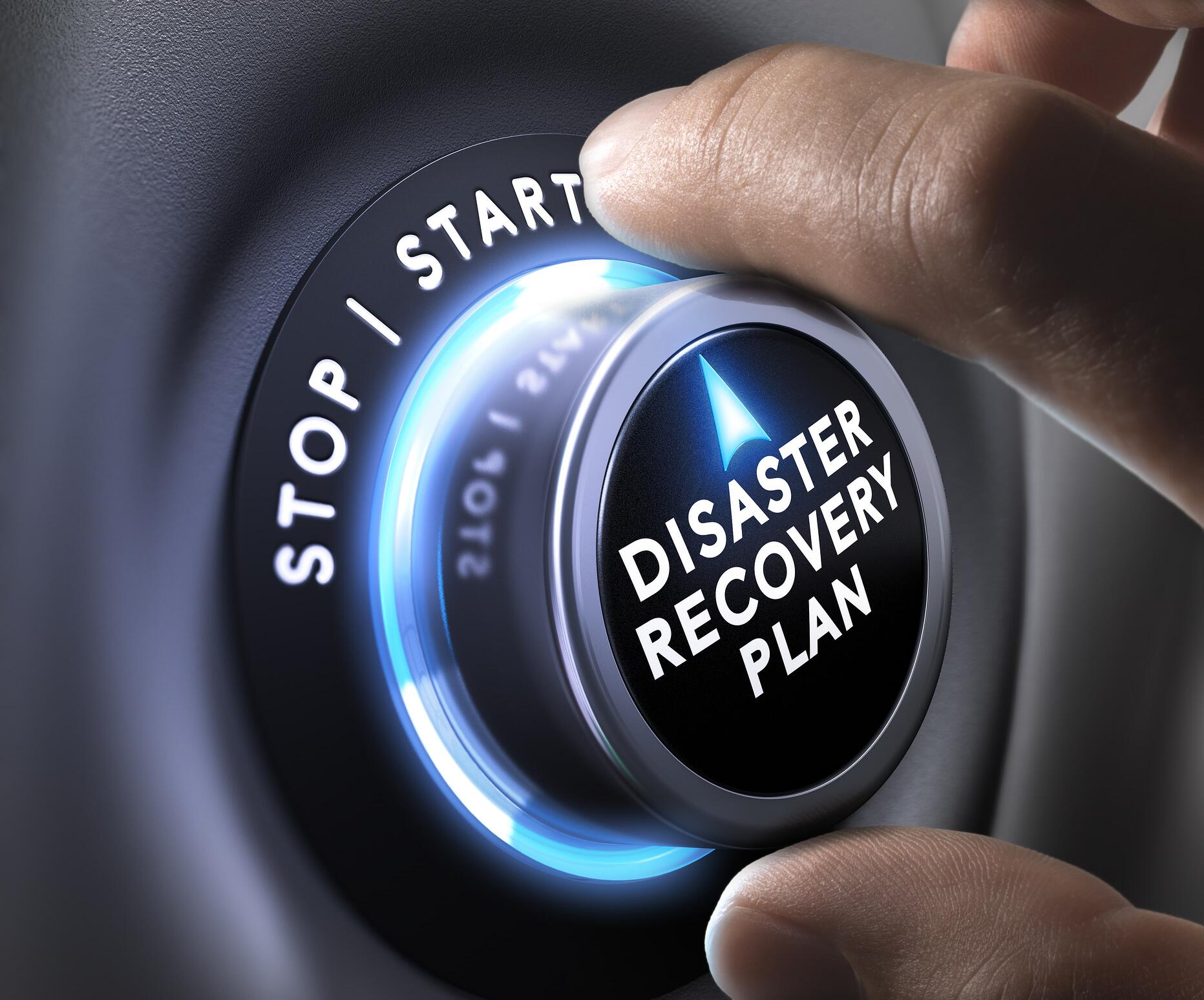
In an era where cyber attacks are making the daily headlines, every business needs to be prepared for any potential disaster. Data breaches, major storms, power outages – all of these scenarios can put a major dent in a business’s operations. It’s important to protect your business from any circumstance, an effective disaster recovery plan (DRP) is the key for keeping your business operations afloat during the worst of times. Here’s what it entails:
What is a Disaster Recovery Plan?

A disaster recovery plan (DRP) is a detailed template for how a business responds to different disasters. It takes into account all types of scenarios, both manmade and natural, that affect operations such as:
- Loss of data from cyber attacks or equipment failure
- Network failure from power outage
- Loss of equipment or business site due to natural catastrophes
- Loss of key employees
These scenarios offer a predictable set of conditions that businesses can act on, although the responses vary based on companies and their situations. Effective plans utilize technology solutions like cloud hosting and have data recovery procedures in place. While every plan is different, there are a few things businesses can consider for creating their own.
1. Map It Out
When it comes to disaster recovery plans, businesses need to focus on two key areas:
- Replacement. For each disaster scenario, focus on the losses your business could face. Determine what hardware or personnel is needed for business continuity and how to replace them.
- Recovery. If disaster strikes, what’s involved in order to get your critical infrastructure back online as soon as possible.
Disaster Recovery Plans also need to serve as roadmaps for keeping businesses on the right track, so ask yourself the following questions:
- Physical Space. Is there access to other facilities or ability for remote work?
- Backup. Are backup facilities ready and accessible in case of disaster?
- Staff Members. Is additional staff needed and available during disasters?
- Employee Safety. What needs to be done to keep your workers safe?
- IT Continuity. Is there a need to replace any IT hardware?
- Telecom Continuity. Can phone, email, and other essential communications be rerouted in case of emergencies?
Once your business figures out these questions, distribute the answers to your team members to inform and prepare them for potential scenarios.
2. Create a Timeline
Every minute of downtime costs you a customer, so it’s important to develop a timeline for the steps to your disaster recovery plan. For example, if your business experiences a cyber-attack, you might immediately restore systems to a backup but might take more time to bring everything back online again. Assigning a timeframe to all possible scenarios will help your business be better prepared for even the most unexpected of events.
3. Delegate Roles

No matter how detailed and precise a plan is, the key ingredient for success is your team members’ preparation and involvement. Create a planning and recovery team that delegates tasks and ensures a smooth process if disaster strikes. An effective disaster recovery plan needs to outline key duties and assign them to specific team members so no moment is wasted in the process. Everyone should be aware of their roles in case something has to be relegated.
4. Test the Plan
Once the details are finalized and your disaster recovery plan is finished, how do you know it works? By testing the plan, of course. Instead of a one and done test, make sure your business schedules routine tests to better prepare your employees for the worst outcomes. In addition, routine testing also helps businesses evaluate each step of their plan and what to improve before it needs to work. Address any issues or failures, and update the plan regularly since your business environment and data needs is constantly changing.
Don’t Wait Until It’s Too Late
While building and implementing a disaster recovery plan requires an investment of time and money, the payoff of preparedness and peace of mind is priceless. It’s critical to the success of your business as it grows and adapts to the fast paced business climate. Protecting your data and keeping your systems up and running with little downtime is what Servpac does best. With our managed network services, we can jumpstart your business’s disaster recovery plan and make sure your IT infrastructure is well prepared for all types of scenarios. If you need additional peace of mind, we also offer disaster recovery services and office space at our new Tier 4 design data center in Mililani. Just call 808-237-5000 or request a FREE consultation below for more information.
—-
Servpac is Hawaii’s Cloud Solution. Started in 2004, Servpac has evolved from a telecommunications provider, to an all-in-one cloud-based technology solution for Hawaii businesses. Our suite of services range from cloud computing, data colocation, managed services, dedicated fiber internet and VoIP phone solutions. We focus on providing premium customer service and deliver world-class solutions that transform Hawaii’s technology landscape.

